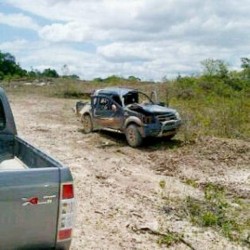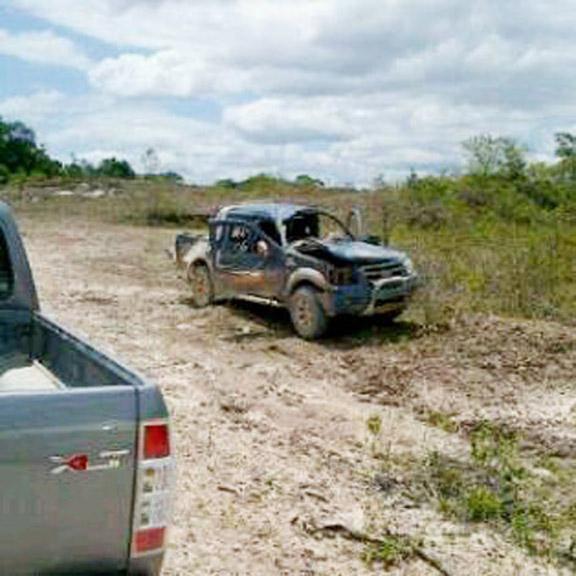Commissioner of the Guyana Geology and Mines Commission (GGMC) Rickford Vieira says that the Bauxite Company of Guyana Limited (BCGL) botched the explosives disposal exercise at its Kwakwani mine site, which caused an explosion that injured several persons and destroyed a vehicle.
Vieira told Stabroek News that while punitive measures are to be taken against the company, it is not clear what these actions should be. He noted that the explosion was the first incident of its kind to occur here and he added that the GGMC has to carefully consider the matter to determine what actions should be taken.
Following the March 2 explosion, the Ministry of Natural Resources and the Environment had commissioned the GGMC along with the Ministry of Labour and other agencies to carry out investigations into the matter.
While the report from the Labour Ministry is still pending, the GGMC has completed its leg of the investigations and Commissioner Vieira said its finding showed that the BCGL, a subsidiary of RUSAL, was found to be in violation of what are considered to be the standard procedures when disposing of the type of explosive material in question.

A BCGI official had stated that the company was disposing of a quantity of expired explosive materials when the explosion occurred. The explosives were later identified as “unserviceable power gel.” The official had suggested that one of the explosives probably went off and caused the explosion.
Vieira stated that while there are no instituted laws regarding the disposal of such materials, the company clearly did not follow the disposal guidelines. He explained that when disposing of unserviceable power gel, its detonator is supposed to be removed from the explosive, and the two components are supposed to be burnt separately. This did not happen.
Instead, Vieira said, the explosives were piled and burnt together with the detonators. Most likely, during the burning, one of the detonators went off, which led to the explosion.
A source close to the company had said last week that the company should have sought to dispose of the material underground. Stabroek News was told that when discarding of explosives of this type, a very deep hole must first be dug and then the defective or expired material is placed into the hole. It was said that a line would then be run from the explosives to a designated spot, and then the hole properly refilled. Once this is done, the explosives would then be detonated, causing at most, a few tremors.
This, however, was not done. Stabroek News understands that the explosives were heaped together and detonated on the surface. The blast from the explosion then produced a shockwave which sent the onlookers, as well as a vehicle owned by the company, flying. One of the injured was reportedly found approximately one hour after the event occurred.
The source also said that when carrying out such activities in populated areas, it is imperative to inform the population of the event as well as the time it is to take place. This, he said, was to ensure that they are aware of and are able to take any precautions necessary. It was suggested that the company could have used the local television station to spread awareness. This also was not done.
However, Vieira said that every explosive has a particular way it should be disposed of and maintained that burning was the prescribed method in this case.
Vieira noted that as is the requirement in all cases, BCGI ensured that two explosives experts were on the site to oversee the exercise. He also said that all of the individuals there were indeed warned to stay a safe distance from the heap of burning explosives.
Meanwhile, the conditions of the injured persons, including two Russians, Andrey Kotsynbinskiy, 33, and Renat Muldahsev, 55, as well as Guyanese Michael Inniss are unknown. The three men were air dashed to the capital for treatment due to the severity of their injuries after the explosion. Inniss sustained injuries to his chest and seemed to be the most seriously hurt. Four others were later brought to the city by ambulance for minor injuries. The other injured person was police constable Royston Chapman who was treated at the Mackenzie Hospital and sent away.
Up to Friday last, Vieira had said that all of the injured were still receiving treatment at a private hospital.

